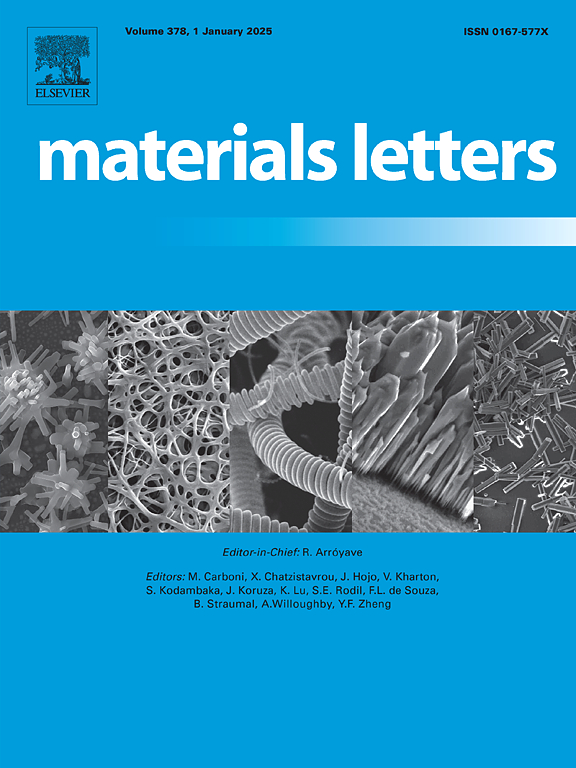Grain refinement effect of Al-Sc-B master alloy for Zr/Sc containing Al alloys
IF 2.7
4区 材料科学
Q3 MATERIALS SCIENCE, MULTIDISCIPLINARY
引用次数: 0
Abstract
Traditional Al-Ti-B/C grain refiners subject to “poisoning effect” when Zr/Sc elements are contained in Al alloys during inoculation. To overcome the difficulty, an Al-2Sc-0.5B master alloy was prepared in this work. It was found that ScB2 and ScAl3 were the main secondary phases in the alloy. Introducing 0.01 % Sc using the Al-2Sc-0.5B to commercial purity Al-0.13Zr alloy, its α-Al grain size could be refined from 1179 μm to 646 μm. However, adding 0.01 %Sc using Al-2Sc master alloy which just contained secondary phase of ScAl3 showed nearly no grain refinement effect. It indicated that ScB2 played important role in the grain refinement. According to crystallographic analysis, (0001)ScB2 and (111)Al had the same atomic arrangement, and crystal mismatch between them was ∼ 7.71 % at 660℃. Thus, ScB2 was proposed a potential nucleation substrate for α-Al.
求助全文
约1分钟内获得全文
求助全文
来源期刊

Materials Letters
工程技术-材料科学:综合
CiteScore
5.60
自引率
3.30%
发文量
1948
审稿时长
50 days
期刊介绍:
Materials Letters has an open access mirror journal Materials Letters: X, sharing the same aims and scope, editorial team, submission system and rigorous peer review.
Materials Letters is dedicated to publishing novel, cutting edge reports of broad interest to the materials community. The journal provides a forum for materials scientists and engineers, physicists, and chemists to rapidly communicate on the most important topics in the field of materials.
Contributions include, but are not limited to, a variety of topics such as:
• Materials - Metals and alloys, amorphous solids, ceramics, composites, polymers, semiconductors
• Applications - Structural, opto-electronic, magnetic, medical, MEMS, sensors, smart
• Characterization - Analytical, microscopy, scanning probes, nanoscopic, optical, electrical, magnetic, acoustic, spectroscopic, diffraction
• Novel Materials - Micro and nanostructures (nanowires, nanotubes, nanoparticles), nanocomposites, thin films, superlattices, quantum dots.
• Processing - Crystal growth, thin film processing, sol-gel processing, mechanical processing, assembly, nanocrystalline processing.
• Properties - Mechanical, magnetic, optical, electrical, ferroelectric, thermal, interfacial, transport, thermodynamic
• Synthesis - Quenching, solid state, solidification, solution synthesis, vapor deposition, high pressure, explosive
 求助内容:
求助内容: 应助结果提醒方式:
应助结果提醒方式:


